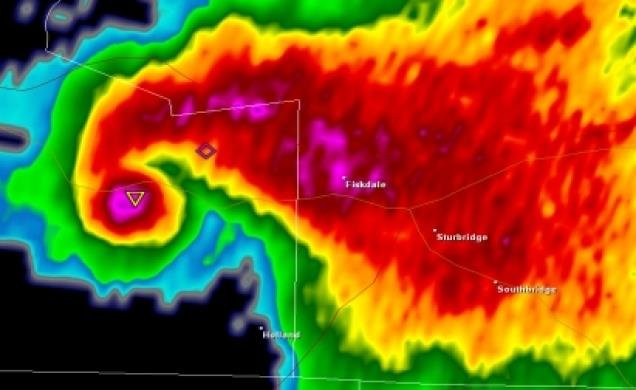-
Posts
76,585 -
Joined
-
Last visited
Content Type
Profiles
Blogs
Forums
American Weather
Media Demo
Store
Gallery
Posts posted by weatherwiz
-
-
1 minute ago, 40/70 Benchmark said:
Jesus, at this point, I just want to slip into a coma and awaken Saturday AM to look out the window.
Given how subtle the differences are of capture vs. late capture or no capture...we seriously may have too. I just don't think we're going to get any consistency or agreement on this until it either happens or doesn't
-
-
1 minute ago, ORH_wxman said:
No problem...ratios are tough because you have to deal with multiple variables....also in larger storms, the weight of the snow on itself is going to limit ratios. IT's a lot easier to get a 20 to 1 fluff ratio in a 7-8" storm than it is in a 18" storm.
That's very true. I wonder if we'd be better off having an airmass that wasn't as cold. given how cold it is aloft and the type of dendrites we'll likely produce, I would think this can make them more susceptible to being ripped apart. IIRC correctly, I think ratios in 2013 and 2015 under the band were like around 15:1 or so right?
-
Just now, ORH_wxman said:
I don't have a magic formula on how to deal with wind, but experience over the years has taught me that in higher wind storms, the ratios will tend to converge onto typical "Cold climo ratios" that you see, say, in interior NY state...which is in the 13 to 1 or 14 to 1 range.....now further inland where winds might be a little lighter, if they get under a death band, then I could see the overall ratios being more like 16 to 1 or something.
Gotcha, thanks!
-
Just now, ORH_wxman said:
Yeah maybe slightly less...I'd prob go like 13 to 1 or so because of the wind.
We never touched upon this in any classes but when taking wind into account for it's impact on ratios is it surface winds, winds aloft, a combination of both and then I guess what would you subtract off in terms of ratios for wind? This is something I have zero knowledge on.
-
Just now, WinterWolf said:
Wiz…way to go with your map pal, Eero endorsed.
may have to make some slight adjustments to it...the west cutoff is going to be extremely sharp. but this is playing out how I was envisioning so can only hope that continues lol.
-
 2
2
-
-
-
can someone post H7? It's quite lagged on weathermodels. Curious to see where it closes off/tracks
-
Maybe a bit stronger and more digging with the northern stream? Actually looks like a bit more robust development of precip within the mid-Atlantic region getting going through the day. Or maybe that's just more of a reflection of moisture along the front
-
2 minutes ago, Spanks45 said:
I said I would wait to make a decision until 12z today, hopefully the Euro ticks back west....hope your map works for all of us. Biggest "storm" here so far is 7.5". It would be nice with all of this hype to at least top that, but we shall see.
I was going to wait until today but I felt pretty confident yesterday after the 12z suite. I'll admit some of the afternoon runs were certainly a little nerve-racking. But since then we have continued to see subtle changes in the positive direction at H5. While this hasn't been reflected at the surface (yet) on some models, models are often lagged with reflecting surface changes in response to H5 changes...but as stated there are surface features which could end up having a much larger impact (dual-low for example). As long as those continue I am highly confident we will get extremely heavy snow into much of Connecticut. It will not take much to pile up the snow given the ratios and degree of lift that will be associated with the band.
-
 2
2
-
-
Just now, RUNNAWAYICEBERG said:
I missed your map, please paste it again.

-
 1
1
-
 1
1
-
-
Sure there are surface features (convection, double-barrel low structure) but these are so complex and it's extremely difficult to know if these will materialize or not. There are some instances they do and other instances they don't (even when you have the model agreement).
-
Just now, Damage In Tolland said:
Your map looks good
Really don't see any reason to deviate from that yet. Obviously there were some concerns thrown in but I stated my reasonings for my map.
-
We continue to see slight improvements (across all models) with the main features aloft. That continues, at this time, to be the most important aspect overall. While it would be great to see these changes reflected within the surface, that is secondary at this point. If these improvements aloft continue I will bet anything all the models end up converging on a more westward track and we'll see heavier QPF thrown more west than what some models indicate. Just given what we're seeing aloft, IMO the chances of more west are much greater than more east.
-
 5
5
-
 1
1
-
-
Just now, RUNNAWAYICEBERG said:
Need it 100miles NW.
Not that far
-
looks like there were some improvements. At any rate, liking how/where H7 is starting to close off...perhaps not in the sense of verbatim but continued improvements aloft would mean very favorable develops and track of H7

-
 1
1
-
-
Just now, 40/70 Benchmark said:
Cosgrove buys the NAM...using NAM, GEM,UK blend...expects 960 bear Provincetown
Deal with it-
The NAM sometimes sniffs these big ones out. given alot of the processes involved her with mesoscale banding and what not...I buy the NAM
-
 3
3
-
-
1 minute ago, 40/70 Benchmark said:
The fact that you can vividly and specifically recall the precise time of last consumption implies that you have been giving it a bit of thought...
Bruins game and it was the night before my last final exam before graduating and I told myself I was retiring from 40's (unless the Bruins were playing game 7 in the Stanley Cup...of course they did against the Blues the following year but I went to the bar to watch).
This may be a special occasion though
-
1 minute ago, 40/70 Benchmark said:
Just stop what your are doing, grab a 40 and a brown paper bag, and run to a wolfpack game scantily clothed.
I haven't had a 40 since Wednesday, December 12, 2018.
I was strongly considering one for Saturday during the storm.
-
Just now, George001 said:
If the Euro moves back west there’s a decent chance we see blizzard watches up for eastern mass
0% chance we see blizzard watches

-
 2
2
-
 5
5
-
 1
1
-
-
DBZ approaching or slightly over 30...that's ridiculous rates

-
 1
1
-
-
Good lord. This is ridiculous. Can't wait to mouthwater over bufkit

-
 2
2
-
 1
1
-
-
Regardless of the dual low a good chunk of the region would get some CCB goods. The CCB too may be quite wide

-
Just now, Sn0waddict said:
The NAM has CT starting to snow at 13z Friday. That would be awesome. Even if it’s just an appetizer for what’s to come.
yeah there's going to be potential for some areas to get 1-3'' well before the storm. some decent llvl lift well ahead




Powerful Multi-regional/ multi-faceted east coastal storm now above medium confidence: Jan 29 -30th, MA to NE, with snow and mix combining high wind, and tides. Unusual early confidence ...
in New England
Posted
I'd maybe start getting concerned 12z tomorrow if we're continuing to see some of what we're seeing. There's just so much time (even though it doesn't feel like it) really. Hopefully the 0z balloon launches will provide significant value...we can at least see how models are initializing heights in the West. This doesn't help with everything but gives a small idea.